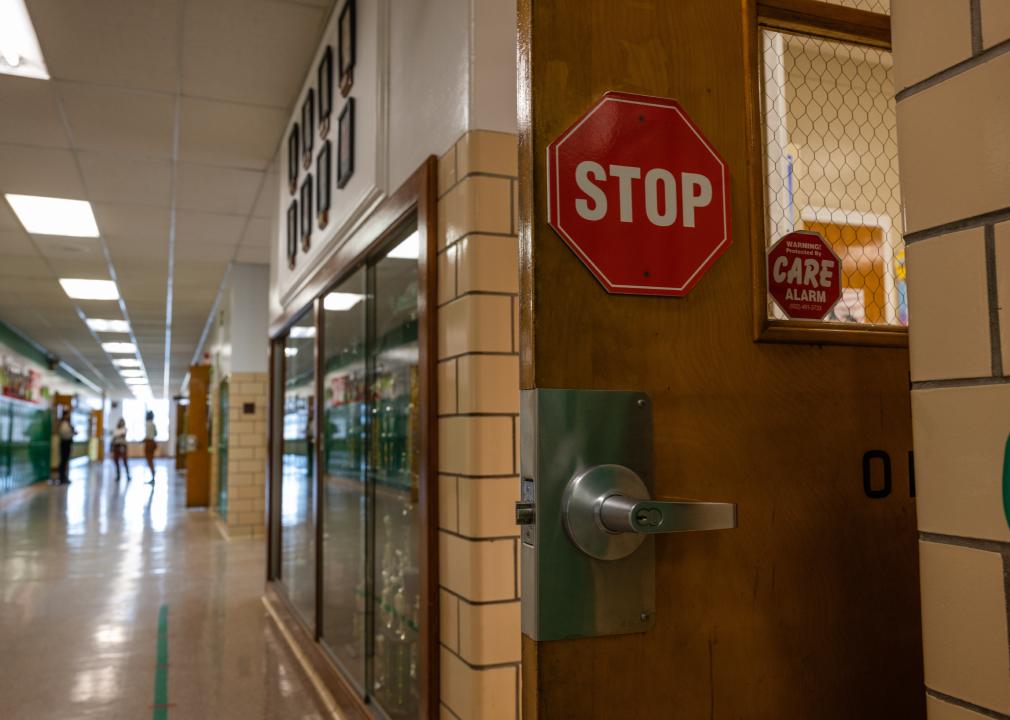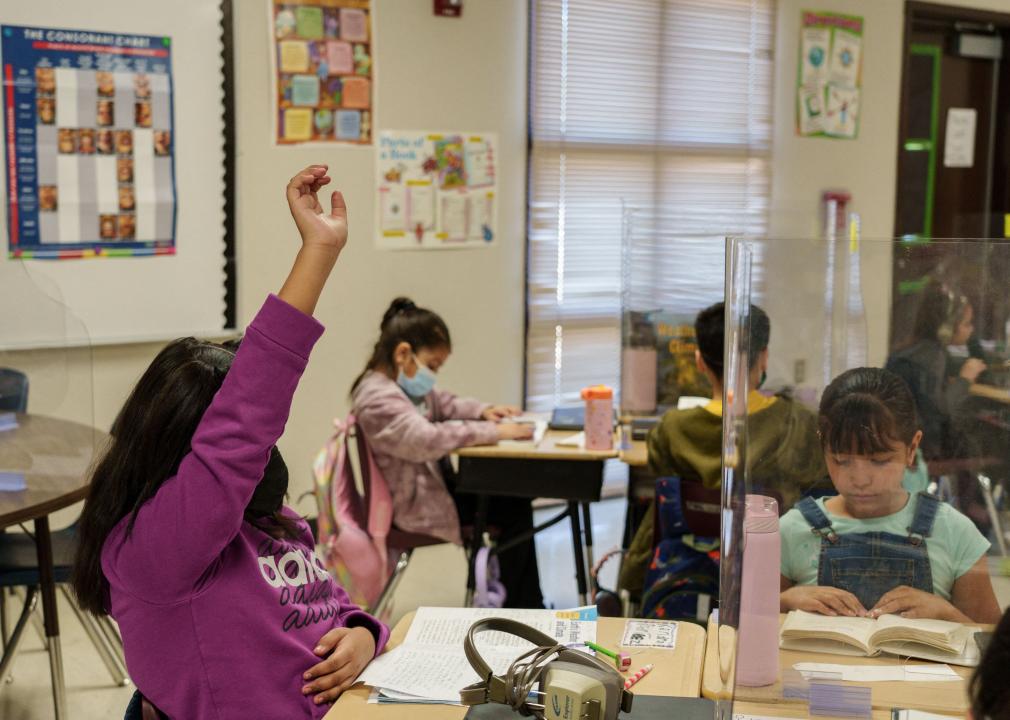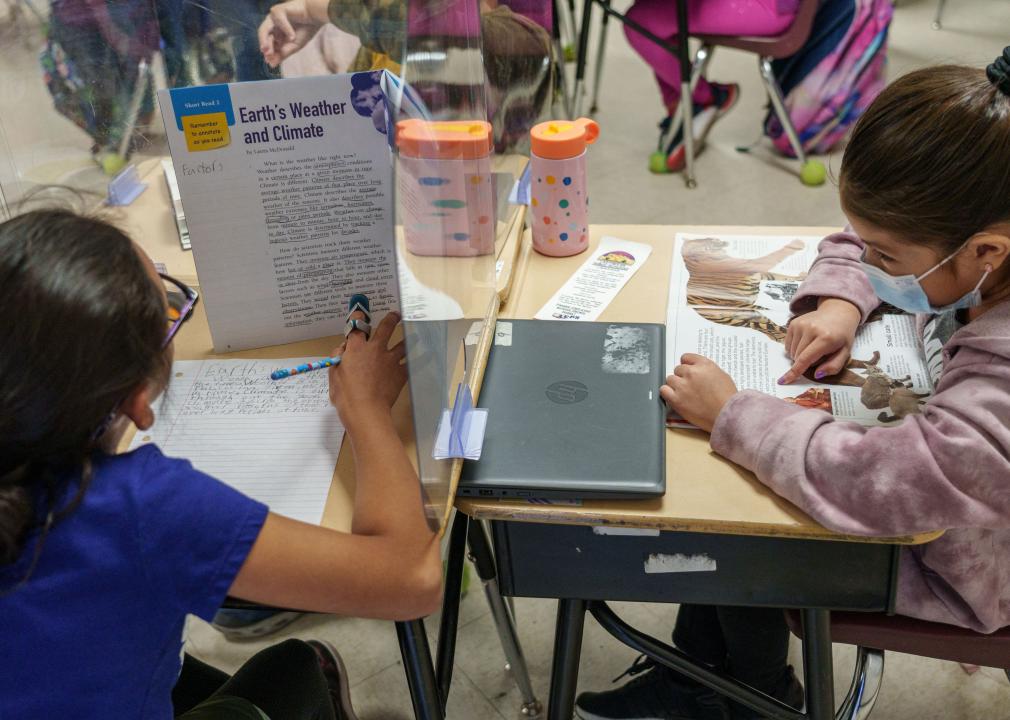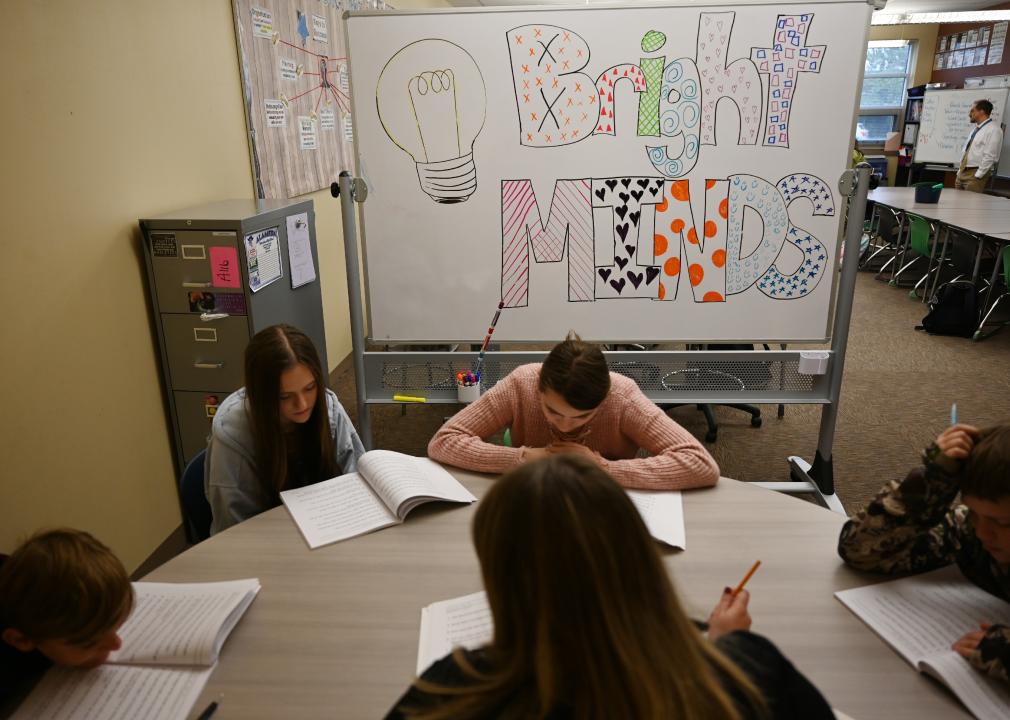22 Apr How teacher shortages are affecting K-12 schools across the country

Jon Cherry // Getty Images
How teacher shortages are affecting K-12 schools across the country
Written by: Beth Mowbray
Educators have long felt the pressure of heavy workloads, low wages, and lack of resources to perform their jobs effectively. This burden increased over the last few years as a result of the COVID-19 pandemic. HeyTutor outlined five ways these pandemic-related teacher shortages are affecting K-12 schools across the U.S.
Burnout is affecting teachers like never before. In January 2022, a poll of National Education Association members showed more than half of educators surveyed were likely to retire or leave the job early because of the pandemic. That’s nearly twice the number that reported feeling the same way in July 2020.
According to data from the National Center for Education Statistics, 44% of public schools reported teacher vacancies and 49% reported other staffing vacancies as of January 2022. In non-teaching roles, custodial positions had the most vacancies, followed by transportation and nutrition. Over half of open positions were due to resignations. Three out of five schools cited the pandemic as a contributing factor to this increase.
Read on to learn how increased educator vacancies have impacted both teachers and students.
Jon Cherry // Getty Images
Larger class sizes
Teacher shortages have caused class sizes to grow during the pandemic—but larger class sizes also contribute to educator burnout, which then leads to even more teachers leaving their positions.
More students in a class can mean more work for teachers to grade, less time to provide individual attention, and higher stress levels. In a January 2022 survey, 3 in 5 members of the Maryland State Education Association reported they would be more likely to continue teaching if class sizes were smaller.
Larger class sizes also negatively impact students. The American Federation of Teachers advocates for the benefits of smaller class sizes—more individualized instruction, higher academic performance, and fewer behavioral problems.
PAUL RATJE/AFP // Getty Images
Additional responsibilities for teachers
When teacher shortages occur, extra work is placed on each educator to help compensate for missing staff. Add in the unique circumstances of the pandemic and it is easy to see how educators have become overwhelmed with additional responsibilities over the past few years.
A May 2021 survey of 493 K-12 public school staff reported 2 in 5 teachers were working more hours than before the pandemic. Teaching online requires extra responsibilities related to technology, as well as additional effort to maintain consistent communication with students and their families. Upon returning to teach face-to-face, social distancing requirements and sanitizing classrooms have contributed to increased teacher workloads.
Canva
Fewer extracurricular activities
Extracurricular activities are crucial for the growth and development of school-age children—physically, emotionally, and socially. During the pandemic, access to these activities has decreased sharply across the country.
One example is the National FFA Organization (formerly known as the Future Farmers of America), a student organization that prepares youth for careers in agriculture. In May 2022, a high number of openings in agricultural teacher positions were reported across states from Illinois to Texas.
Sports teams, arts programs, and after-school clubs have been forced to meet virtually, if at all. Dartmouth Health notes this lack of social interaction has particularly affected adolescents, with increasing rates of depression and anxiety.
PAUL RATJE/AFP // Getty Images
Lower student achievement
Perhaps the most concerning repercussion of teacher shortages is a decline in students’ academic achievement. In a January 2022 study published by the Annenberg Institute at Brown University, test scores of 5.4 million third to eighth graders showed changes during the pandemic. Both reading and math scores dropped significantly. For elementary-age students, gaps in achievement between high and low-poverty schools were 15-20% wider in reading and math than those pre-pandemic.
An April 2022 article published by McKinsey & Company estimates students in North America are 4 months behind in their learning. Working to address teacher shortages and get students back on track is going to be a time-consuming and costly process.
RJ Sangosti/MediaNews Group/The Denver Post // Getty Images
Limited specialized programs
During the pandemic, teacher shortages have impacted specialized school programs just as much as standard classes. The U.S. Secretary of Education has issued a call to action to address vacancies in areas like bilingual Spanish-English education; science, math, and technology programs; and career and technical tracks.
The National Center for Education Statistics reported special education had the most teacher vacancies as of January 2022, with nearly half (45%) of schools reporting open positions. Some school districts have been forced to cut students from special education programs—like the Extended School Year program in Buffalo—due to a lack of staffing. Teacher shortages in these specialized programs affect some of the most high-need and vulnerable students at a time that is already difficult for youth and families.





